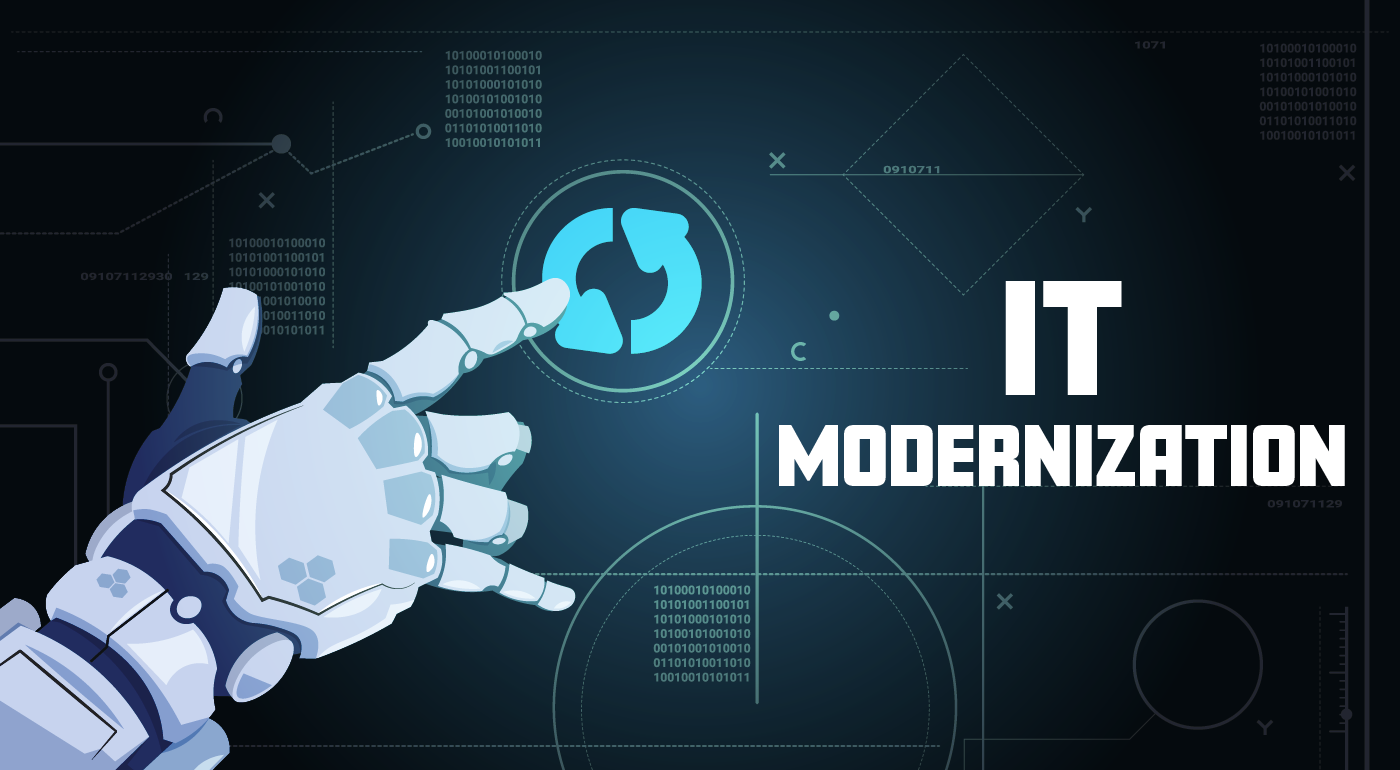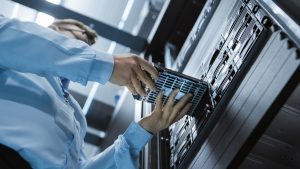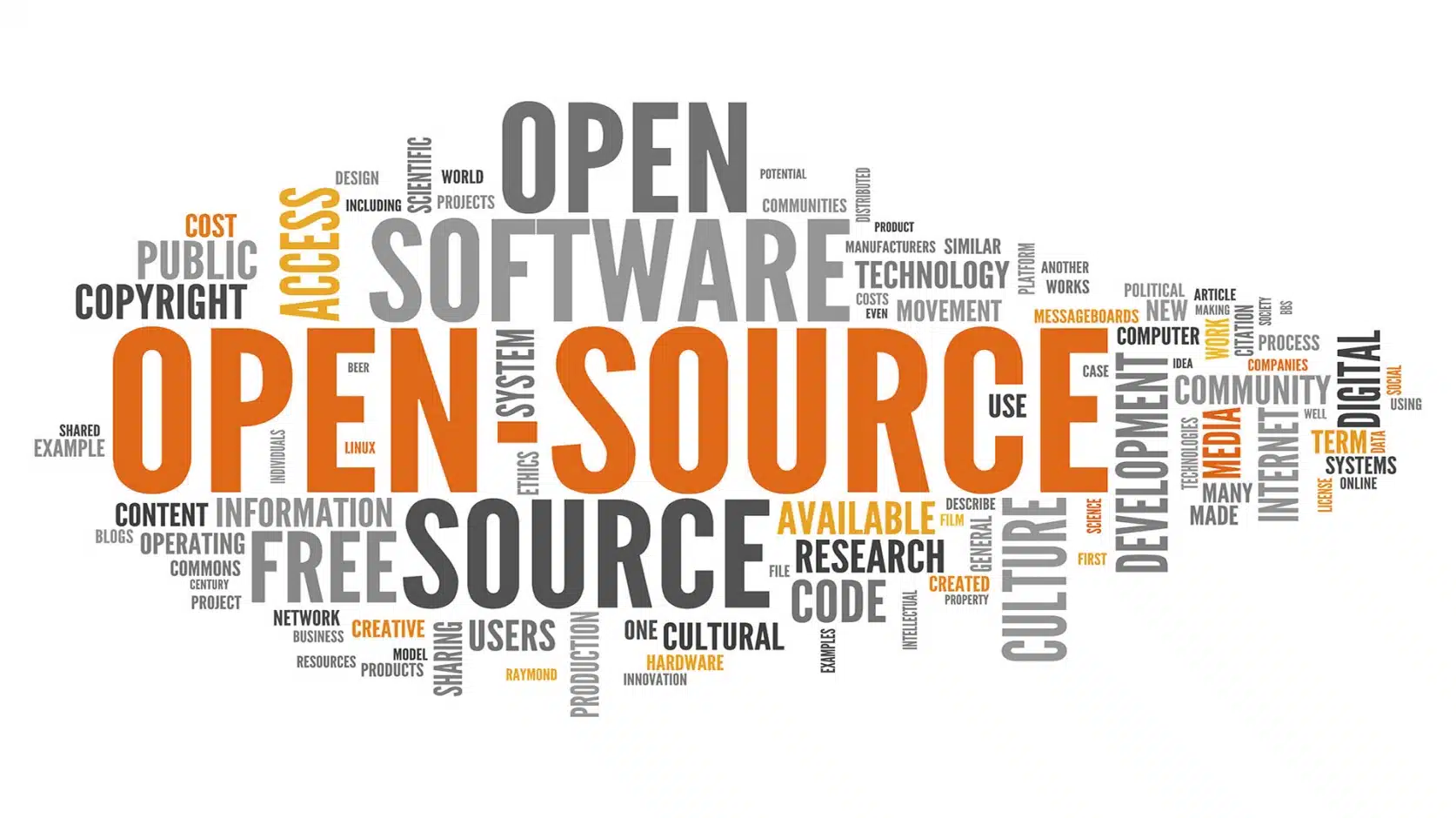
Among its many other effects, COVID-19 has disrupted government information technology (IT), leading to more government employees working from home, citizens wanting more digital access to government services, and a much greater load on government IT services in general. That’s true on the federal, state, and local level.
Some government agencies responded better than others. For example, citizens in a number of states, such as Kansas, Connecticut, and Florida, found long wait times at unemployment insurance websites. On the other hand, the Small Business Administration (SBA) was able to quickly and efficiently put into place programs such as Paycheck Protection Program (PPP) loans, which helped those businesses stay stable until the economic crisis had subsided.
What made the difference? IT modernization.
What is IT Modernization?

IT modernization means taking old computer hardware, software, and processes and updating them with modern technology. For example, that could mean rewriting an application in a different computer language that supports modular design. Modular design makes it easier to divide up the work between programmers, meaning that a larger number of people can work on it at a time. That also makes the software easier to update later, such as when the regulations around the government program change.
IT modernization also means taking advantage of other modern technologies, such as high-speed Internet, imagery, cheap storage, and ubiquitous smartphones. For instance, citizens can run software from their smartphone, instead of requiring a laptop computer, and take a photo of something, rather than waiting to receive a paper document from one agency and then mail it to another one.
The Drawbacks of Supporting Legacy Applications
You might wonder why IT modernization is needed. What’s the problem with supporting legacy applications, even if they do date as far back as the 1970s and 1980s? If it ain’t broke, don’t fix it, right?
The problem is, in many ways, legacy applications are “broke” even if they’re still working perfectly. Here are some issues:
- User interface. Applications were written decades ago, before everyone had a computer in their pocket. Many legacy applications don’t support access through a mobile phone, or support it badly. That makes for a bad user experience and dissatisfied citizens.
- Older computer programs and hardware systems don’t use modern cybersecurity techniques to protect data and access to systems. Keep in mind that the U.S. Department of Labor’s inspector general estimates that up to $87 billion in fraudulent unemployment insurance claims was paid out, in some cases because outdated state unemployment insurance systems weren’t capable of checking.
- Cloud support. Back in the day, companies – including government agencies – had to buy, staff, and support their own data centers and computer equipment. But as part of IT modernization, companies can now move all that to the cloud. Instead of requiring millions of dollars in upfront capital expense, companies can use cloud services, relying on regular operational expense, without having to keep a staff of expensive, difficult to find technical employees. Moreover, using the cloud makes it easy to ramp up hardware and infrastructure services – like when hundreds of thousands of people suddenly need government services.
- In some cases, technical people aren’t just expensive – they don’t exist. Government agencies with software written in venerable languages like COBOL have a hard time finding employees who know those languages and who can update the software.
Why It’s Time for State Governments to Modernize Their IT
COVID-19 demonstrated to us all how important it is for both federal and state governments to be nimble to support rapidly changing conditions – such as a global pandemic. In some cases, such as with the SBA, already-existing IT modernization programs helped those agencies to be prepared.
The problem is that federal IT systems seldom act in a vacuum. Often, as with unemployment insurance, there’s a federal IT component, and IT components in each of the states, to allocate and distribute the federal funding. If the state IT component doesn’t use modern technology, then many of the advantages of federal IT modernization are lost.
As the saying goes, a chain is only as strong as its weakest link. Right now, in terms of government IT, state government is that weak link.
What’s Involved in Modernizing State IT Systems
 It’s true that IT modernization isn’t simple, and there have been some spectacular failures. Following these steps can make IT modernization more successful.
It’s true that IT modernization isn’t simple, and there have been some spectacular failures. Following these steps can make IT modernization more successful.
- Align stakeholder goals. First, state governments need to make sure they know the problem they’re trying to solve – which may not be the same problem they were trying to solve in the 1970s and 1980s. Who will be using the software? For what purpose? How will they interact with it? What performance will they expect? What other organizations will need access to the data, and what will they do with it? All of these questions need to be answered before development can start.
- Optimize processes. That said, state governments shouldn’t just take their current processes and migrate them to a new system. Part of meeting with stakeholders is to find out what information is actually needed and the most efficient way of getting it from one place to the next. Does a form really need to be printed out, manually signed, and then mailed to another agency? Or can the user sign the form electronically and send it off in a single step?
- Modernize data. In many cases, government agencies are working with databases that are decades old and don’t take advantage of modern technology that makes the data easier to access and manipulate. Yet, those databases also act as an important institutional memory for the agency. It’s possible to convert those old-fashioned databases into a more up-to-date system that makes that data easier to use.
- Secure and scale. Make sure the application and its data are protected, both from theft and manipulation, and ensure that the software is capable of handling however many simultaneous users performing typical activities.
What’s the Holdup?

If IT modernization is such a no-brainer, why are states doing such a bad job of implementing it? In a word, money. While IT modernization saves money in the long run by making applications more efficient and usable, rewriting those applications using computer languages and techniques from this century costs money – money that many state governments don’t have.
A silver lining from COVID-19 is that, in some cases, more money became available. Some state and local governments used Coronavirus Aid, Relief, and Economic Security Act (CARES Act) funding to help pay for some of these IT modernization efforts. These include digitizing health records in Virginia, implementing software-defined networking in New Hampshire, and improving broadband access in many states.
On the federal level, even more funding has become available, through the Technology Modernization Fund (TMF), originally set up in 2017, which received an infusion of $1 billion in March 2021. Already, 10 federal agencies have received more than $300 million in funding through the program for IT modernization programs.
For example, Housing and Urban Development (HUD) is receiving almost $14 million to move five applications, written in COBOL, to the cloud, and rewrite them in Java. While the project might sound pricey, HUD expects it to save $8 million per year.
The Department of Labor is receiving $3.5 million for a project that will eliminate mailing a specially printed certificate to employer applicants, who then have to mail it to the Department of Homeland Security U.S. Citizenship and Immigration Service (USCIS), which will reduce the time of the process.
These IT modernization programs are a great first step. Now we need the next step: for the state agencies that, in many cases, interact with these federal programs to undergo IT modernization of their own. The federal government has made a start with funding for upgrading state unemployment insurance systems. But more is needed, like the State and Local IT Modernization Act – endorsed by the National Association of State Chief Information Officers (NASCIO) — which has been languishing in Congress since last year.
Until that happens, the federal agencies will still be limited by the legacy applications on the state government level.




